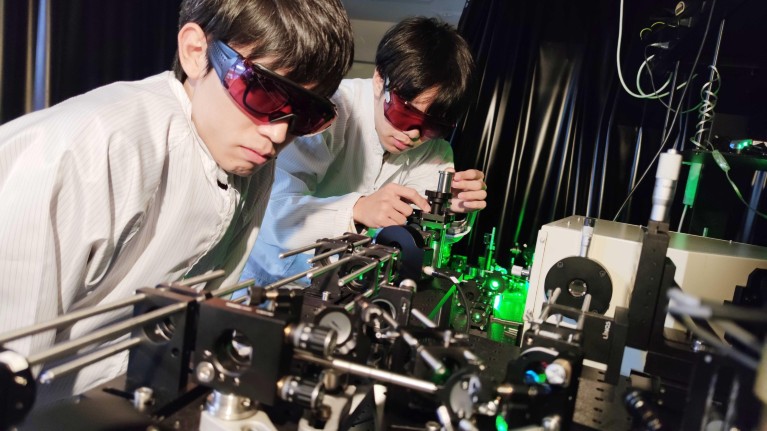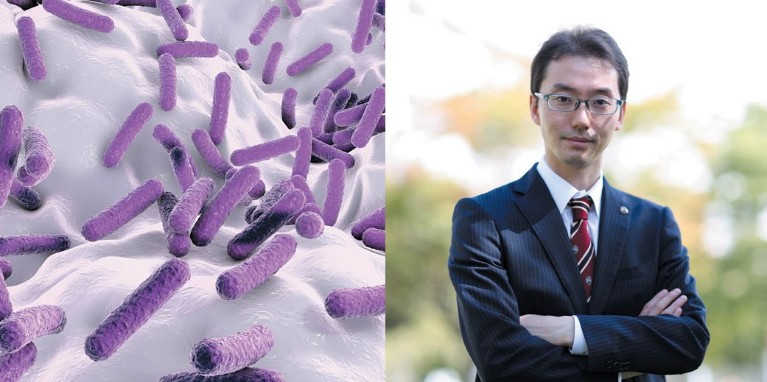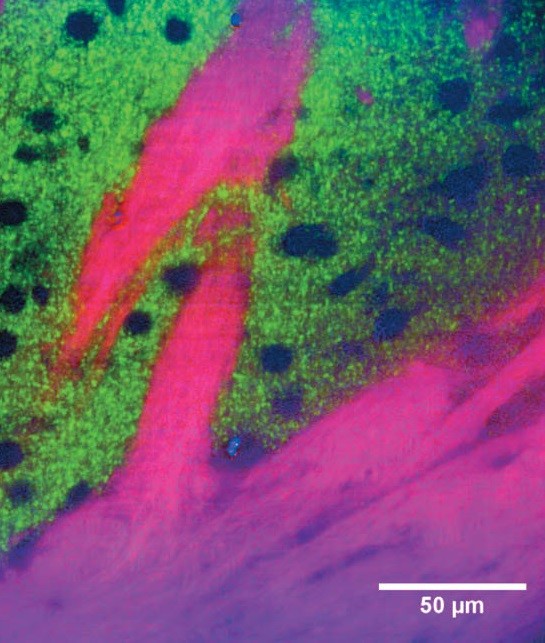Ranked among Japan’s top universities, Osaka University has built an enduring legacy of pioneering discoveries, from T cells to oxygenase enzymes, since opening its doors almost a century ago.
Across its three campuses, researchers take an interdisciplinary approach to tackle human disease. Advances in immunology and imaging technologies are uncovering new drug targets, while research in microbiology and statistical genetics is helping to complete the disease biology puzzle.

Advances in imaging technologies are key focus: Professor Fujita is speeding up analysis of biological samples by improving the commonly used technique of Raman imaging.
Building a bigger picture of disease
A biological database that integrates genome, phenome, metabolome, and microbiome data has been built by Professor Yukinori Okada, from the Graduate School of Medicine. The first of its kind in Japan, the vast database supports a broader understanding of the factors that drive disease, which could lead to targeted therapies for a variety of conditions.
“While we already know how to generate big data and identify disease-risk genes, it has been difficult to translate this to disease biology, drug discovery, and precision medicine,” says Okada. “By connecting genetics ‘omics’ data, we can create a landscape of human biology.”

Professor Okada is interested in microbiome change over the lifespan. Okada’s group is investigating various types of gut microbes for their role in disease.© KATERYNA KON/SCIENCE PHOTO LIBRARY/Getty Images
Okada is also investigating the connection between the gut microbiome and disease, including autoimmune conditions such as rheumatoid arthritis. In 2019, Okada and his team used whole-genome shotgun sequencing to analyse the microbiomes of Japanese patients with rheumatoid arthritis.
The detailed analysis revealed that the microbiomes of rheumatoid arthritis patients contained several species of bacteria belonging to the Prevotella genus, indicating that multiple species contribute to disease onset.
Okada is extending this approach to other gut microbiota and other diseases. “We are interested in the changes in microbiome over the lifespan and in response to treatments,” he says.
Capturing bone cells in action
The cellular mechanisms that underpin rheumatoid arthritis are also being studied by Professor Masaru Ishii at the Graduate School of Frontier Biosciences. Ishii has developed a microscopy technique that uses near-infrared lasers to visualise inside living bone tissue for a detailed real-time view of cellular interactions.
Bone is a dynamic tissue that is constantly dissolving and forming. This regeneration process is driven by interactions between osteoclasts that either build or destroy bone. As bone is a hard tissue, most imaging techniques cannot capture this complex cellular interplay.

Professor Ishii is looking at cellular mechanisms underpinning rheumatoid arthritis. The microscopy technique of Ishii’s group can peer into bone tissue to observe cells in real time.
“Our technique can analyse bone cell dynamics in living animals,” says Ishii. “It enables us to understand how cells move, how they function, and how they differentiate.”
Ishii is using his technique to detect the cellular mechanisms that drive bone destruction in rheumatoid arthritis, such as bone and immune cell interactions. These insights could lead to therapeutic approaches that target pathological, rather than healthy cells.
In 2019, Ishii and his team discovered a new type of cell involved in rheumatoid arthritis using a protocol for isolating inflamed tissue lining the joint. The researchers found that healthy osteoclasts are derived from stem cells in the bone marrow, while arthritis osteoclasts originate from precursors in the blood. These cells develop into pathological osteoclasts that are high in the FoXM1 protein, a promising new target for treatment.
Bringing molecular imaging up to speed
Raman imaging has become a powerful tool for analysing materials at the molecular level, but its weak spectral signal means these techniques are too slow for analysing live cells and tissue for medical diagnoses. “You don’t want to wait 24 hours to get reliable data,” says Professor Katsumasa Fujita at the Graduate School of Engineering.
Fujita is addressing this problem by developing a Raman imaging technique that can analyse biological samples in minutes and can detect hundreds of points simultaneously. The high-speed imaging tool can capture cellular events at the molecular level, from cell differentiation to death.

Fujita's group is refining the Raman imaging technique to dramatically improve cell and tissue analysis.
“Raman imaging provides more information than other techniques, such as the balance of proteins, nucleic acids and lipids,” says Fujita. “This reveals cells and tissues in greater detail, which can lead to more accurate diagnoses.”
The technique can also identify molecules too small to be stained with fluorescent dyes, such as drugs and nucleic acids. Fujita is developing simple alkyne-based tags that can illuminate specific molecules in living cells to show how they interact.
“These small tags can help detect the amount of drug present in the cell or tissue and precisely analyse its efficacy,” says Fujita.
Club to pioneer ideas
Boosting the university’s research capacity is the SAKIGAKE Club. Through a range of activities, this club brings together about 60 outstanding early-career researchers from across the sciences, humanities and social sciences disciplines to generate and fund new interdisciplinary research ideas.

SAKIGAKE Club members Professor Michiya Matsusaki (left) and Associate Professor Koji Oohora, who was recently promoted from tenure-track in the Graduate School of Engineering.
“The club aims to build the capacity of these young researchers and generate new research ideas through interdisciplinary exchange,” explains Professor Takao Onoye, Executive Vice President of Research. For example, an important activity for the club is to formulate proposals for Japan’s ‘new normal’ arising from the COVID-19 global pandemic, as the nation grapples with the emergent scientific, social, environmental and economic challenges.



 Collection: Nature Index 2021 Asia Pacific
Collection: Nature Index 2021 Asia Pacific